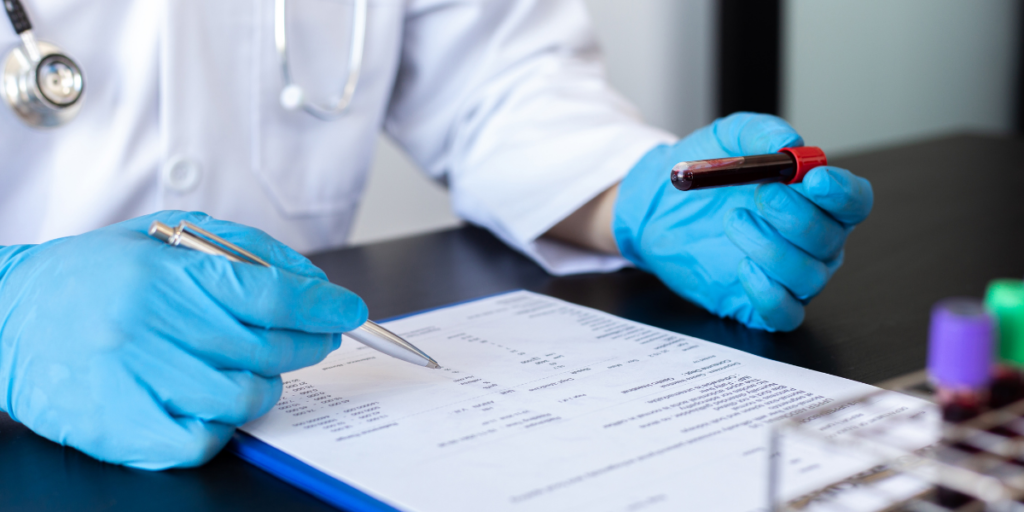It is early in the morning. You are getting ready for work, dressing up in front of the mirror.
You suddenly notice something weird, a lump on your neck! Panic then sets in.
Out of distress, you would have many questions.
Is it growth? Is the lump dangerous? You may have many questions, but one thing is for sure, it is a pain in the neck.
What is a goitre?
A goitre is a lump in the neck caused by an enlargement of the thyroid gland.
If present, you would feel the lump at the lower half of your neck, to the sides of the windpipe. Pain may or may not accompany the lump.
However, it is crucial to note that the thyroid gland is not the only cause of neck lumps.
FUN FACTS
- Thyroid hormones affect every single cell in our bodies.
- What do Oprah Winfrey, Sia, Gigi Hadid, Bernie Sanders and Hillary Clinton have in common? They all had thyroid diseases and received treatment for it.
- Overly bulging eyes may be a sign of a thyroid disease called Grave’s disease.
How common are goitres?
The prevalence of goitres is location-dependent. However, it might affect up to 30-50% of the adult population.
In Malaysia, 9.3% of the population is affected by goitres. However, the Indian population and people under 45 years old are more commonly affected.
Is it a goitre?
One may notice a lump in their neck and quickly associate it with the thyroid gland.
However, there are other structures in our necks.
If you run your fingers down the midline of your neck, you may notice two small bumps, one after the other. These bumps are cartilage of your throat. These bumps are normal and not a cause for concern.
In our necks, there is also a complex network of lymph nodes. These may commonly become enlarged in the presence of infections and, far less commonly, cancers.
Therefore, if you notice any abnormal lump in your neck, it is highly suggested to seek medical attention to determine the cause of the lump.

What exactly is the thyroid gland?
The thyroid gland is a butterfly-shaped organ. Also, we can locate it at the front of our necks. It lies against and wraps around our windpipes under the voice box.
The thyroid gland is a hormonal organ. Moreover, it produces thyroid hormones (T3 and T4) which have various functions.
The function of the thyroid gland
A hormone called Thyroid Stimulating Hormone (TSH) stimulates the thyroid gland. In addition, the pituitary gland in our brains is responsible for producing TSH.
When stimulated, it produces thyroid hormones, which affect virtually every part of our body.
Some of the crucial functions of these thyroid hormones are:
- Increasing body temperature
- Increasing heart rate and pumping force
- Increasing blood pressure
- Increasing metabolism rates
- Increasing blood sugar levels
- Breakdown of fats
- Stimulation of the nervous system
- Increasing activity in the digestive system
- In children, maturation of the brain and growth promotion
How does a goitre form?
One common misconception about goitres is that it is a disease by itself. The thyroid gland’s enlargement is actually a sign of an underlying illness. It is similar to a cough being a sign of COVID-19, for example.
We can boil down the common causes of goitres into several diseases. These are infections, inflammation, autoimmune diseases and tumours.
Many of these diseases are associated with a higher or lower level of thyroid hormones in our body. Therefore, a patient may experience symptoms of such deranged hormone levels which will explain below.
The most common cause of goitres worldwide is due to iodine deficiency. In Malaysia, it is more common in rural regions.
Iodine
Iodine is essential in thyroid hormone production. Since introducing iodized salt to consumers, rates of iodine deficiency have decreased globally. However, this does not mean you should not start increasing your salt intake. That may lead to even more problems.
In the absence of Iodine, increased TSH constantly stimulates the thyroid gland. This mechanism is the body’s attempt to restore the thyroid hormone levels in the body. Unfortunately, as a side effect, the thyroid gland grows and eventually develops into a goitre.
Thyroid cancer
The vast majority of neck lumps are not cancerous. However, thyroid cancer is not rare, and any concerning neck lumps should warrant a visit to the doctor.
In 2020, Malaysia reported Thyroid Cancer as its 18th most common cancer. The 5-year prevalence of Thyroid Cancer in Malaysia is 8.32 per 100,000 population.
Globally, the World Health Organization (WHO) reported thyroid cancer as the 9th highest number of new cancer cases in 2020. The number of new cases in females was also three times higher than in males.

Complications of goitres
If left unaddressed, a goitre would continue to grow. Eventually, it would cause neck discomfort and become aesthetically unpleasing.
As long-standing goitres grow, larger goitres may start compressing on other structures causing obstructive symptoms. These are such as:
- Tracheal (windpipe) compression
With compression of the windpipe, patients may experience difficulty breathing. They may notice some noisy breathing, known as wheezing. A cough with a choking sensation may also be present. - Nerve compression
The nerve that supplies our vocal cords runs right beside the thyroid gland. Therefore, if compressed, patients may experience some hoarseness in their voices. - Oesophageal (gullet) compression
While less commonly affected, goitres may also compress the oesophagus. This compression would lead to difficulty swallowing.
MORE FUN FACTS
- In 2007, the Universal Salt Iodization (USI) strategy was introduced to eliminate iodine deficiency worldwide. Locally in 2018, Malaysia made iodized salt mandatory for any household use.
- Seafood, dairy products and eggs are excellent sources of Iodine!
- Studies show that goitres may have some genetic factors. For example, those with a family history of goitres may have a higher chance of being affected.
Symptoms of deranged thyroid hormones
With the different causes of goitres, patients may experience symptoms of high thyroid hormone levels (hyperthyroid) or low thyroid hormone levels (hypothyroid).
Hyperthyroidism
- Weight loss
- Intolerance to heat
- Excessive sweating
- Diarrhoea
- High blood pressure
- Increased pulse rate
- Hand tremors
- Restlessness and anxiety
- Insomnia
- Menstrual cycle disruption in females

Hypothyroidism
- Fatigue
- Intolerance to cold
- Weight gain
- Hair loss
- Dry skin and brittle nails
- Constipation
- Slow heart rate
- Low mood and depression
- Menstrual cycle disruption in females
These symptoms are often vague and non-specific. If you are experiencing any worrying symptoms, please visit a doctor for a consultation.
What should I expect during the visit to the doctor?
The doctor would ask you multiple questions to better understand your situation.
Then, the doctor would have a good look and feel of your neck and the lump. Other relevant physical examinations accompany it.
Commonly, the doctor would perform an ultrasound of your neck and further imaging if needed. In addition, the doctor might take some blood to check your thyroid hormone levels and other tests.
The doctor may take a sample for a biopsy if the lump is suspicious. Further investigations would depend on a case-to-case basis.

How are goitres treated?
Goitres are treated based on the underlying disease that caused it. As a result, some patients may require just medications, while others may require surgical intervention.
In some cases, Radioactive Iodine Therapy may be an option. This treatment is generally safe and effective. However, this does not apply to pregnant or breastfeeding women.
Patients will consume the Radioactive Iodine orally. It destroys the thyroid gland cells without the need for surgery.
From a surgical aspect, some patients may require surgical removal of the thyroid gland. This procedure is called a thyroidectomy.
Thyroidectomy
A traditional thyroidectomy would require a horizontal incision above the collarbone. For aesthetic purposes, the incision is made in a skin crease which can hide the scar.
With technological advancement, some advanced centres now offer minimally invasive video-assisted thyroidectomy (MIVAT) and robotic thyroidectomy.
MIVAT uses scopes through a smaller incision which offers the benefits of faster recovery. Also, there is an improved cosmetic outcome.
Robotic thyroidectomy commonly uses an incision at the underarm instead of the neck. This option has the best cosmetic outcomes.
Thyroidectomy complications
With the removal of the thyroid gland, we lose the ability to produce thyroid hormones. Therefore, patients would then require lifelong supplementation of thyroid hormone.
The rare complications of thyroidectomy are nerve injuries and parathyroid gland injuries.
During surgery, it might accidentally damage the adjacent nerves. This nerve damage would lead to changes in one’s voice. The severity varies depending on the extent of the nerve damage.
The parathyroid glands are small glands located behind the thyroid gland. These glands regulate our body’s calcium levels. If these are injured, patients may lose the ability to maintain their blood calcium levels. As a result, it leads to low blood calcium levels (hypocalcaemia).
Conclusion
Goitres impact roughly 9.3% of the Malaysian population. If you notice an abnormal lump or bump in your neck, do not hesitate to seek medical evaluation.